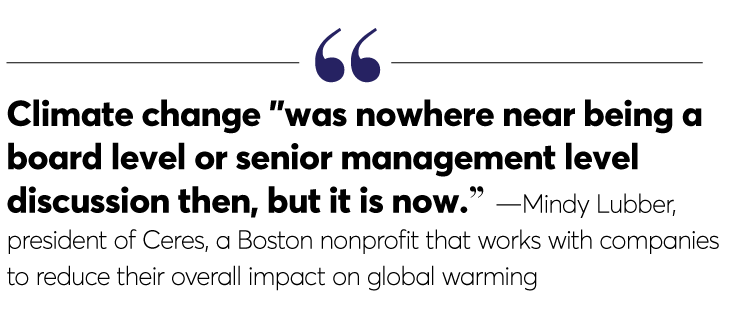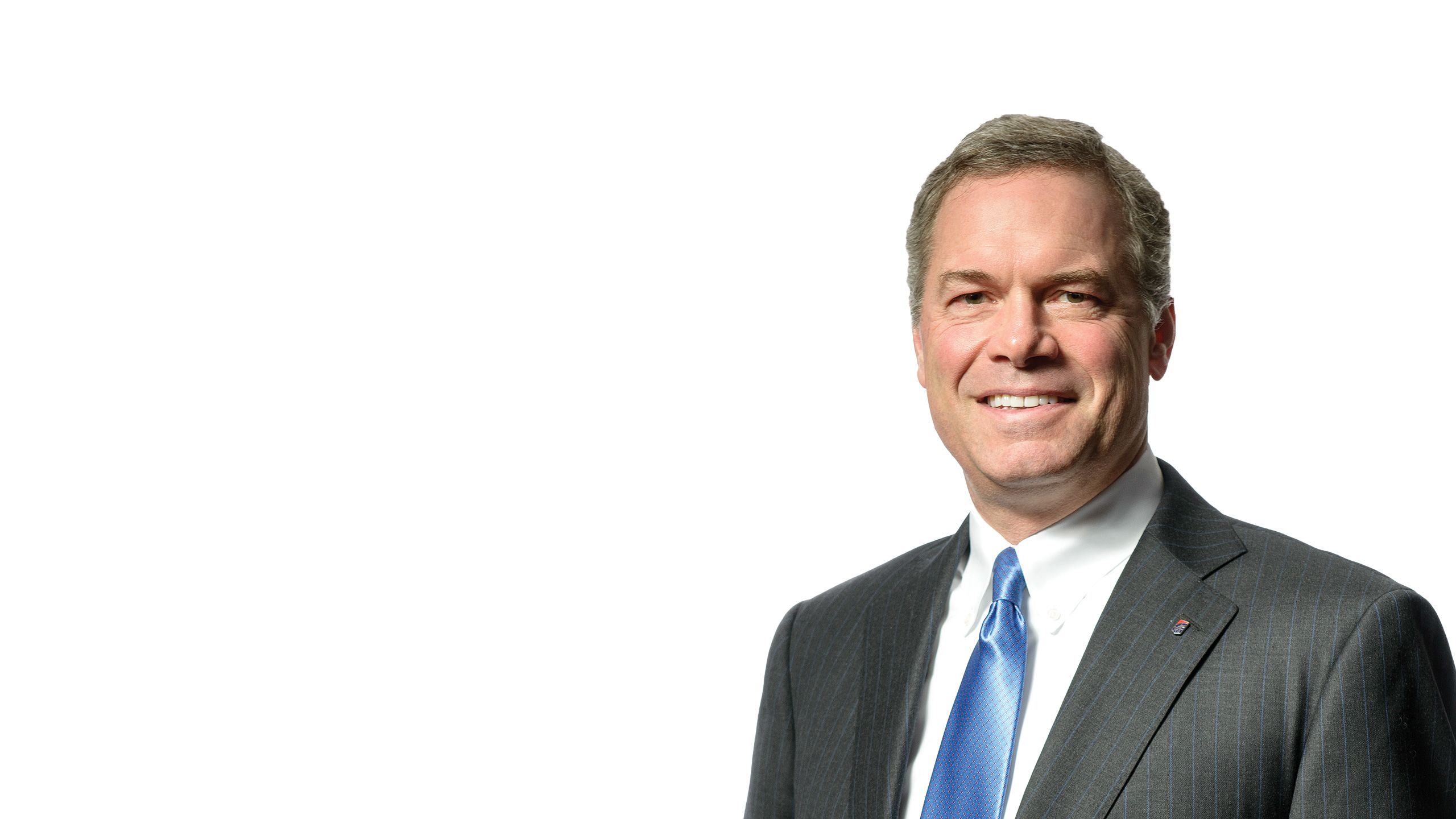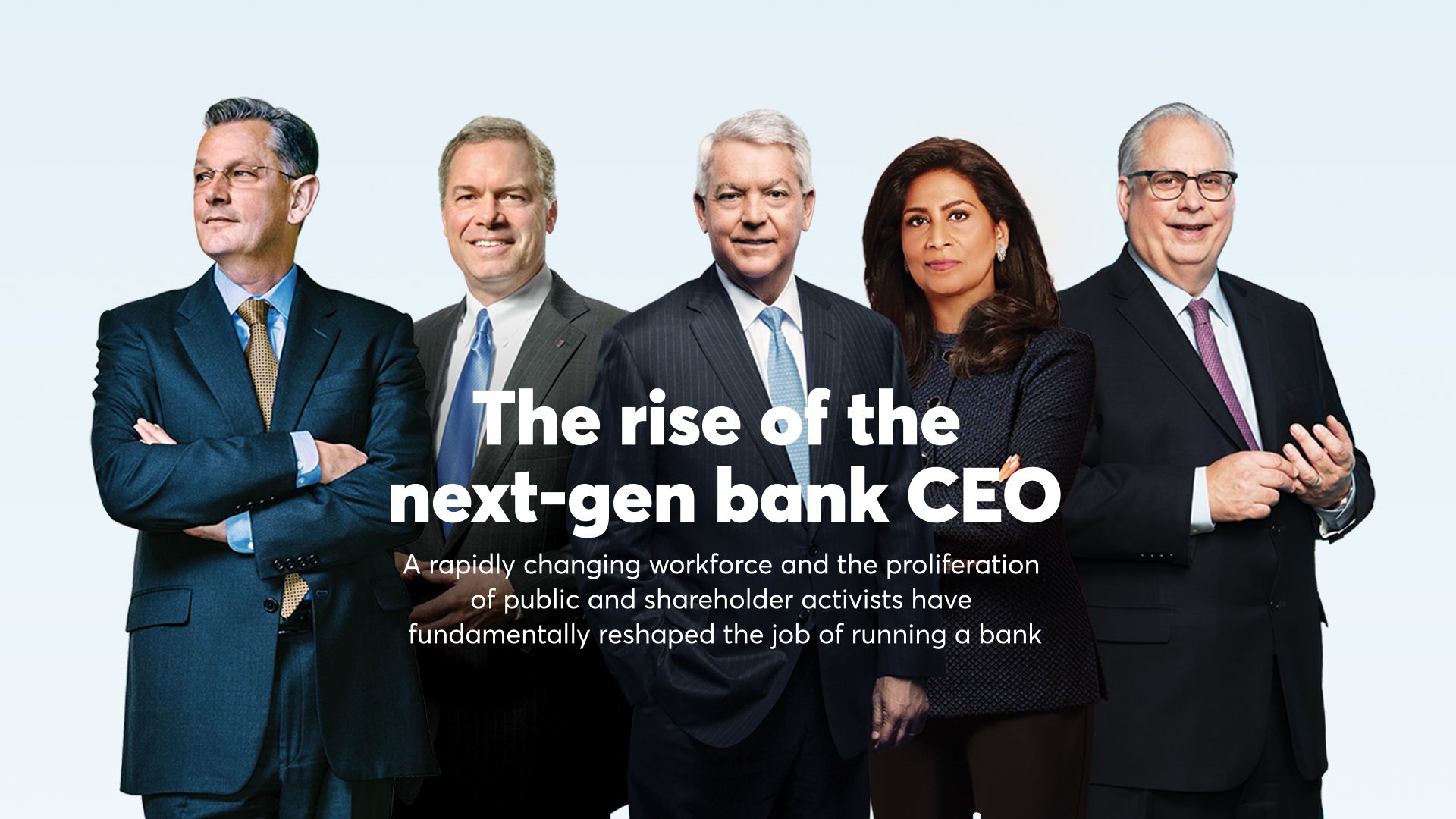
By Alan Kline
Few issues in this country are as divisive as gun violence, so when Bank of America announced after last year’s Parkland, Fla., school shooting that it would stop lending to certain gun manufacturers, it drew both praise and scorn from investors.
Some said they were proud to be shareholders in a company that was willing to take a stand on an issue so politically charged. Others were incredulous, arguing to Chairman and Chief Executive Brian Moynihan that the decision was financially irresponsible.
“The company is willfully giving up money,” investor Justin Danhof, the general counsel of a group called the Free Enterprise Project, said to Moynihan during a question-and-answer session at Bank of America’s 2018 annual meeting. “That’s an odd choice for a bank.”
Moynihan, though, said that the impact on the bottom line and share price was secondary to the feelings of BofA employees. More than 150 staffers had lost a friend or relative in mass shootings and Moynihan told shareholders that, after Parkland, many had urged the bank to take meaningful action to help curb the violence.
“This doesn’t come from us,” Moynihan said, referring to the company’s senior leaders. “This comes from our teammates, saying we have to help.”
That Moynihan responded so swiftly to the wishes of BofA’s employees says a lot about how workplace dynamics are shifting — and how the role of the bank CEO itself is changing.
CEOs have historically operated under the mantra that they would do what’s in the best interests of shareholders, even if the business practices weren’t necessarily good for customers and society at large. There’s even a 2003 documentary called “The Corporation” that makes a case about how corporate practices — tied as they are to the pursuit of profit — fit the very definition of psychopathic behavior.
But CEOs are now dealing with a far different type of worker than their predecessors ever did. Driven by millennials, who now make up a majority of the workforce, employees today have high expectations of how their companies should behave and what they should stand for. The prediction is that these expectations will ratchet up further as even younger people enter the workforce.
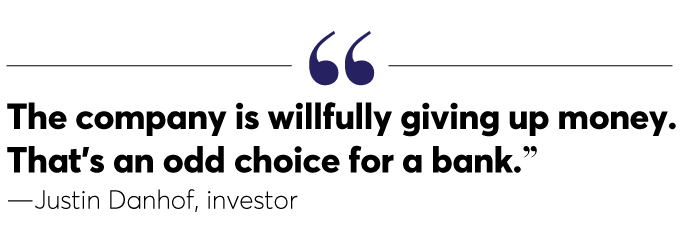
This shift is happening at a time of rapid change in the financial services industry, when attracting and retaining top talent has never been more important. If CEOs aren’t focused on building workplaces that are nurturing, forward-thinking, inclusive and values-based, then their companies will surely lose the talent war, said Steve Bradshaw, the president and CEO of the $38 billion-asset BOK Financial in Tulsa, Okla.
“If you’re the CEO of a public company, your purpose is to increase shareholder value — that description hasn’t changed,” said Bradshaw, a 28-year veteran of BOK who became CEO in 2014. “But that’s not a motivating factor for a lot of your workforce. Workers today want to understand what your purpose is, what you stand for, how you deal with customers, how you problem solve and how you engage in the communities that you are part of. That’s how a lot of employees grade the value of the company, and if that grade slips, people will go to work at places that will give them a better sense of belonging.”
Shifting expectations of regulators and investors are also fundamentally changing the way bank CEOs are leading. Regulators are paying far more attention to issues around governance, reputation and culture than they did before the financial crisis, and they have made clear that it is on CEOs to ensure that companies are treating customers fairly, meeting their community development obligations and not taking shortcuts to hit profit targets.
And while there will always be investors who care primarily about next quarter’s results, an increasing number of them also expect CEOs to take leadership roles on pressing social, political and economic issues. Some are even basing investment decisions on companies’ records on issues such as climate change, financial inclusion or gender and racial equality.
The pressure is immense — not just to meet all of these responsibilities, but to display leadership in doing so. Every step — and misstep — happens on a much more public stage than it did in decades past, fanned by social media and a nonstop news cycle.
The upshot is that the job of the bank CEO is far more complex than it was just 10 years ago, said John Turner, the president and CEO of Regions Financial in Birmingham, Ala. “Back then, the role was primarily about running the bank, [managing] board relationships and periodically interacting with regulators,” Turner said. “Today the role is much broader in terms of constituents you interact with.”
Not that Turner is complaining. As he sees it, the added pressure is making the $126 billion-asset Regions a better bank.
“If we are going to do business well, we have to do the right thing and do it the right way,” said Turner, who at one time was the president of Whitney Holding Co. in New Orleans and took the helm at Regions last year. “If we do that, we believe it creates value for all parties, which ultimately impacts returns for our shareholders over time.”
"I’ve worked at banks that had good cultures, but it was never as deliberate and as purposeful as it is now."
—Nandita Bakhshi, CEO of Bank of the West

The war for talent
Workers in other industries have higher expectations of their CEOs as well, but there’s no denying that after the financial crisis, bank CEOs in particular needed to rethink their priorities. The sketchy practices of some banks — from offering mortgages to consumers with questionable credit and little income documentation to purposely maximizing overdraft fees by reordering checks to process ones with the highest dollar amounts first — tarnished the entire industry and contributed to a perception that banks were prioritizing profits over doing right by customers, employees and the communities they serve.
It’s fair to wonder, then, if CEOs will remain so purpose-driven the next time the economy turns and banks’ profits, which hit record highs in 2018, start to shrink.
In his recent book “The Enlightened Capitalists: Cautionary Tales of Business Pioneers Who Tried to Do Well by Doing Good,” James O’Toole, a business professor at the University of Southern California, concluded that many companies’ good intentions are often derailed by the short-term demands of shareholders. That pressure is still evident on quarterly earnings calls, where investment analysts are more likely to press CEOs on strategies for boosting net interest margins or lowering efficiency ratios than ask about their sustainability or diversity programs.
But nearly a dozen CEOs who spoke to American Banker for this story insisted that they have to lead differently primarily because the makeup of the workforce is changing rapidly.
Younger workers demand work-life balance, they expect their bosses to take an interest in them professionally and personally and they want to be engaged in the communities where they live and work. Companies are responding by investing heavily in staff development and training, encouraging employees to volunteer during work hours, and providing once-unheard-of perks — think personal concierges to handle daily tasks and breast-milk delivery for new moms traveling on business.
How much clout do workers have today? When Bank of New York Mellon tried earlier this year to impose restrictions on working from home, the staff revolted and Chairman and CEO Charles Scharf had to quickly table the idea.
“We have listened and learned,” Scharf said in an email to employees in early March.
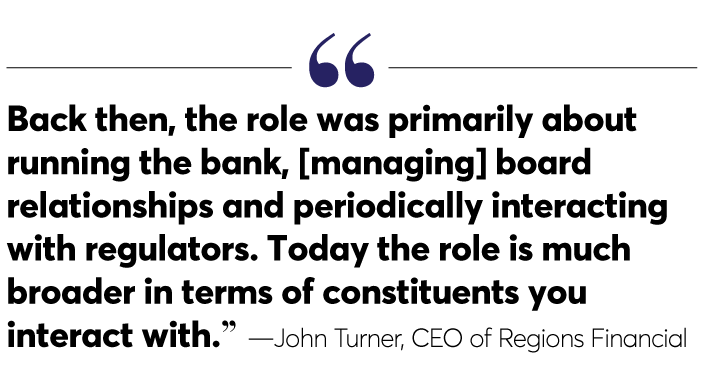
Workers also expect CEOs to pay more than just lip service to issues around corporate social responsibility and workplace diversity. BOK, for example, recently established a diversity-and-inclusion council to help create more opportunities for women and minorities and, to show that he’s serious about the effort, Bradshaw is chairing the council himself.
Perhaps the biggest change taking place is in the way CEOs are interacting with rank-and-file employees.
A generation ago, CEOs primarily relied on a small circle of senior leaders and board members for counsel and may have interacted with employees “once or twice a year,” said Bryan Jordan, the chairman, president and CEO of the $41 billion-asset First Horizon in Memphis, Tenn. Today, CEOs are far more visible within their organizations, routinely meeting with and seeking feedback from employees, through candid town halls, brown-bag lunches or simply by dropping into branches or call centers unannounced. Jordan sometimes holds office hours where he takes calls on his direct line from employees wanting to voice concerns or discuss company policies.
Cam Marston, the president of Generational Insights, a Mobile, Ala., research and consulting firm, said that younger workers want to be heard and crave affirmation in ways that older generations never did. These are individuals who received an abundance of attention and feedback when they were growing up and they want the same in the workplace.
Marston’s research has also found that many people, particularly those under 45, expect their workplace to make them happy. “Historically, workplaces weren’t designed this way,” he said. “You had a job, you did your job and you created happiness on your own time.”
Given these dramatic shifts, it is crucial that managers — up to and including the CEO — take a true interest in their employees, Marston said.
“In a fast-paced world this can be hard to do,” Marston acknowledged. “But what I tell CEOs is that they have two choices: You can stop, talk to employees, make eye contact and ask follow-up questions, or you can struggle with turnover.”
Sydney Finkelstein, a professor of business at Dartmouth College and the author of many books on leadership, agreed, adding that banks are already losing top college and business school graduates to a technology industry that seems to have “an endless capacity to hire.”
“There’s always been a lot of variation with respect to how CEOs treat people and how they think about employees,” said Finkelstein, who also hosts a podcast on leadership. “What’s changed is that those CEOs who spend less time on talent and people issues today are going to pay a bigger price than they ever did before.”
The communication works both ways. Kessel Stelling, chairman and CEO of the $45 billion-asset Synovus Financial in Columbus, Ga., said that while “managing by walking around” is not necessarily new, it is “more imperative today” because it both makes employees feel more valued and gives him vital feedback on policies, products or competitive threats in real time.
“It really allows me to be a better, more informed leader,” he said.
When he was CEO at WSFS Financial in Wilmington, Del., Mark Turner made it part of his routine to visit branches, operations centers, wealth management offices and other locations and develop friendly relationships with employees.
“Whether it’s in the back office or on the front lines, CEOs and other executives need to know what’s going on in their business,” said Turner, who stepped down as CEO in December but remains executive chairman of the $13 billion-asset WSFS.
“If we gain an account from a competitor, why? If we lose one, why did the customer say they were leaving? You can only get that information from the people who are seeing it firsthand …
“And only when you have genuine, open relationships do you get real honest feedback as opposed to hearing what they think you want to hear.”
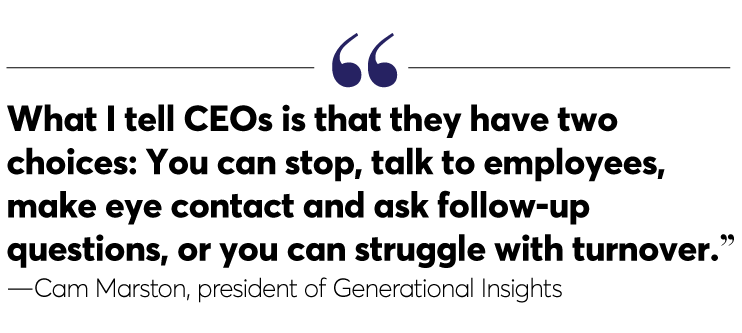
Banks are giving workers a voice in myriad other ways as well: establishing employee engagement councils that meet regularly with the CEO, conducting frequent surveys and providing access to digital tools that allow employees to give instant feedback on company policies.
BBVA Compass in Birmingham, Ala., uses a Twitter-like tool, dubbed Ignite, to gauge employee sentiment on a range of issues. It was through this tool that senior leaders first learned of associates’ frustrations with the frequency and length of meetings, and they responded by creating what’s called a “meeting manifesto,” a guidebook that sets strict limits on meetings, including who needs to be there, how long they should last and when they should be held.
The bank has also introduced perks such as extended leave for new parents and overnight breast-milk delivery for new mothers traveling on business, all as part of a broader effort to support employees and reduce turnover, said Rosilyn Houston, the chief talent and culture executive at the $91 billion-asset BBVA Compass.
This heightened focus on employees’ well-being is raising the stature of banks’ human resources departments. Sandy Weill, the former CEO at Citigroup, used to disparage HR departments as nothing but cost centers. BBVA Compass, by contrast, rebranded its HR department as the office of talent and culture in 2016 under then-CEO Manolo Sanchez, and armed it with the resources needed to improve everything from hiring practices to benefits offerings.
Houston said it was a significant change because “it moved HR from an administrative function to a strategic function within the organization.”
At Fifth Third, the HR department played a crucial role in the promotion of Greg Carmichael, who had been its chief operating officer, to the CEO position in 2015. Teresa Tanner, the bank’s current chief administrative officer, who was head of human resources at the time, was involved in the search process from the beginning, and strongly advocated for Carmichael because he was not a traditional banker — he joined the bank as head of information technology — and she believed he would bring fresh thinking to business and talent decisions.
It was unusual for the head of HR to help select the next CEO, but to Tanner it made perfect sense. “That’s what HR is all about,” she said. “It’s about making sure that we have the right talent, with the right skills for the future, and there’s no more important job than the CEO.”
"If you’re the CEO of a public company, your purpose is to increase shareholder value — that description hasn’t changed. But that’s not a motivating factor for a lot of your workforce."
—Steve Bradshaw, CEO of BOK Financial
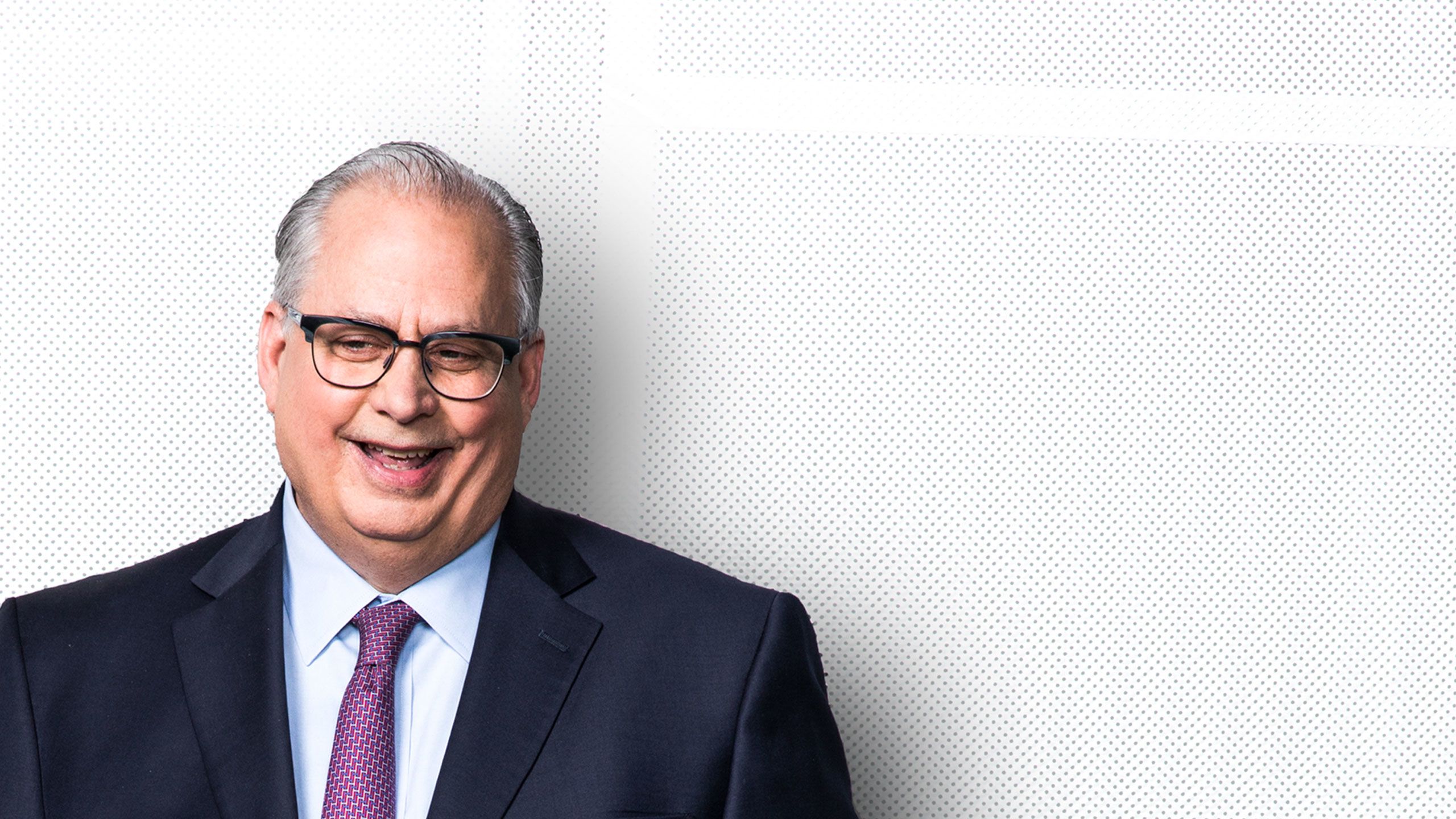
The pace of change
The rapid pace of change in banking means that CEOs also have to foster a culture of continuous learning — while being continuous learners themselves.
Competition — from other banks, upstart financial technology firms, and even the likes of Google, Apple and Amazon — is only going to intensify and it’s on the CEO to make sure their companies are adapting to the shifting landscape and preparing their employees for what’s next.
The most tangible way banks are adapting to this heightened competition is through consolidation. Many banks are pursuing scale not only to gain access to more customers, but also to use savings from efficiency initiatives — closing overlapping branches and merging other duplicative functions — to invest heavily in the most cutting-edge technologies.
And as banks become larger and more complex, CEOs are prioritizing worker training, and retraining, and leadership development. A case in point is BOK, which has made about a dozen acquisitions over the last 20 years but only recently added formal training programs designed to retain talent and prepare midlevel managers for senior roles.
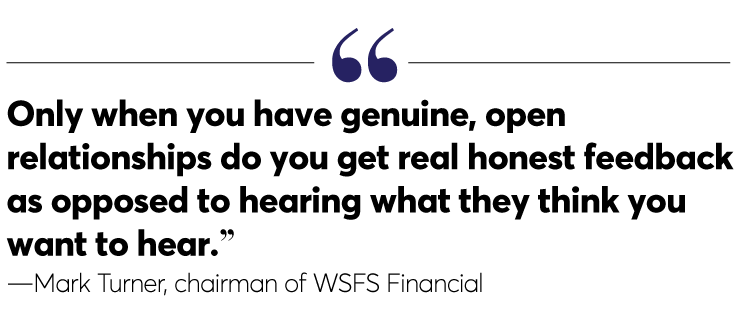
Under Bradshaw, BOK has put in place an executive coaching program geared specifically toward up-and-coming managers who senior leaders view as having executive potential. It also offers an advanced leadership program for midlevel managers, another management training program for newly hired or recently promoted employees and series of online classes and one-day boot camps.
The investments are paying off in reduced turnover and in the number of jobs being filled by internal candidates. Before the initiatives were put in place, roughly 14% of vacant jobs went to existing employees, a figure that plainly disappointed Bradshaw. “I didn’t know what the right number was, but I knew it wasn’t that,” he said.
Today, that figure is closer to 30%.
The $26 billion-asset Investors Bancorp in Short Hills, N.J., has also ramped up its leadership and development programs as it has scaled up. Between 2008 and 2014, the company made seven acquisitions, more than quadrupling its size.
Investors Chairman and CEO Kevin Cummings said that in today’s changing banking climate, top executives have to be hyperfocused on teaching others how to lead and be comfortable with making important decisions.
“People are being asked to do more things; the job they had last year is not the job that’s expected of them today and might not be the same job they are doing next year,” Cummings said. “We had people come here when it was $10 billion bank. Do you think the manager of a $10 billion bank has the same responsibility as a $26 billion bank?”
Ray Davis, the longtime president and CEO of Umpqua Holdings in Portland, Ore., has said that a CEO’s primary job at a growing company is to support other leaders.
“I really see my job as head of support,” Davis, who retired in 2016, wrote in his 2007 book, “Leading for Growth: How Umpqua Bank Got Cool and Created a Culture of Greatness.”
“Because things are moving so quickly, I can’t assume that tools and support that worked yesterday are sufficient today. I’m out there all the time asking, ‘What is it you need?’ It’s a constant. It’s the only way we can keep up with our growth.”
CEOs themselves also have to be continuous learners. Cummings, for example, was one of 90 managers at Investors who recently took part in a 10-week leadership course in which they studied how companies in other industries dealt with and resolved challenges.
WSFS’ Turner traveled the country for three months in 2016, visiting with companies across a wide range of industries to learn how they are innovating, preparing employees for change and enhancing culture. He kept the entire WSFS workforce updated on his findings through a weekly blog.
And Nandita Bakhshi, the president and CEO of the $87 billion-asset Bank of the West in San Francisco, actually mystery shops rival banks. She keeps multiple accounts at other banks and, every once in a while, she’ll visit their branches in jeans and a T-shirt just to check out their customer experience, she said.
"In the past, boards and advisors to boards have advised company CEOs to keep their head down and stay out of the line of fire. Now the opposite may be true. If companies and CEOs do not get involved in public policy issues, making progress on all these problems may be more difficult."
—Jamie Dimon, CEO of JPMorgan Chase
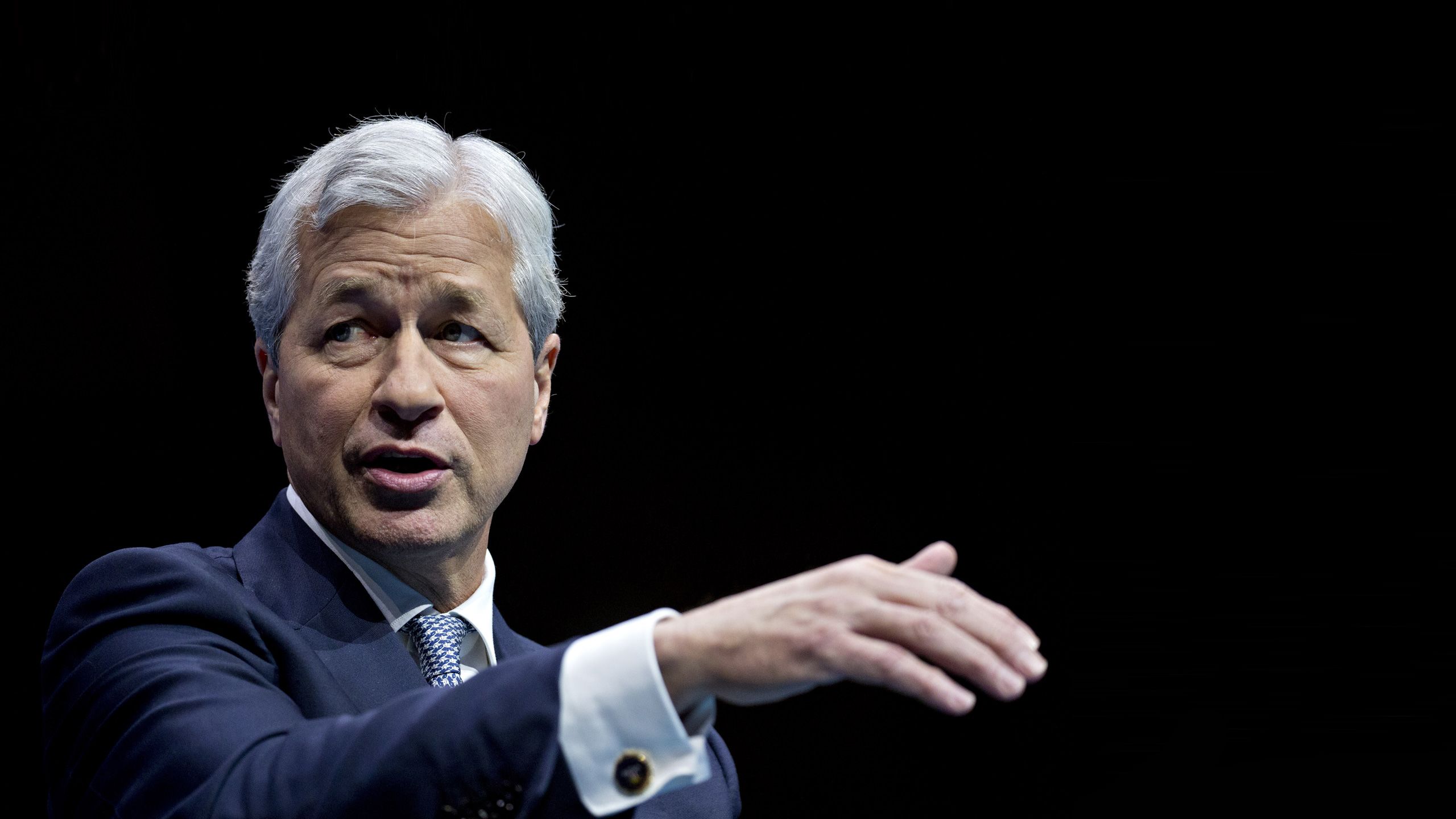
Will it last?
Of course, CEOs have in the past been known to “overindex on the shareholder piece of the equation,” as Fifth Third’s Tanner put it, so it’s fair to question whether their current lofty mindset has staying power.
When the banking industry is less flush, other pressures could shift the emphasis from long-term strategy to short-term goals.
Said Finkelstein, the Dartmouth professor: “There is always a reason to be skeptical, because they have a long track record of behaving badly.”
Then again, times have changed. Some bank CEOs, Dimon among them, have been arguing against companies giving quarterly earnings guidance, precisely because, they say, it puts such an intense focus on short-term profits that it can lead to corporate misbehavior.
Boards are far more professional than they were a decade ago — heavily populated by CEOs and ex-CEOs with experience running companies — and won’t tolerate excessive risk-taking. Regulators are being more vigilant about making sure that banks’ policies and business practices align with their stated values. The last thing they want is another Wells Fargo phony-accounts scandal on their hands.
As Bank of the West’s Bakhshi sees it, the way CEOs are leading today is the new normal.
“I’ve worked at banks that had good cultures, but it was never as deliberate and as purposeful as it is now,” she said.
Besides, she asked, “Why wouldn’t you want to create a values-based culture? Why wouldn’t you want to do well for the environment? Why wouldn’t you want to make progress on gender equality? Why wouldn’t you want to bring the underserved into the fold of banking? It is our responsibility to be leaders of all of that.”


